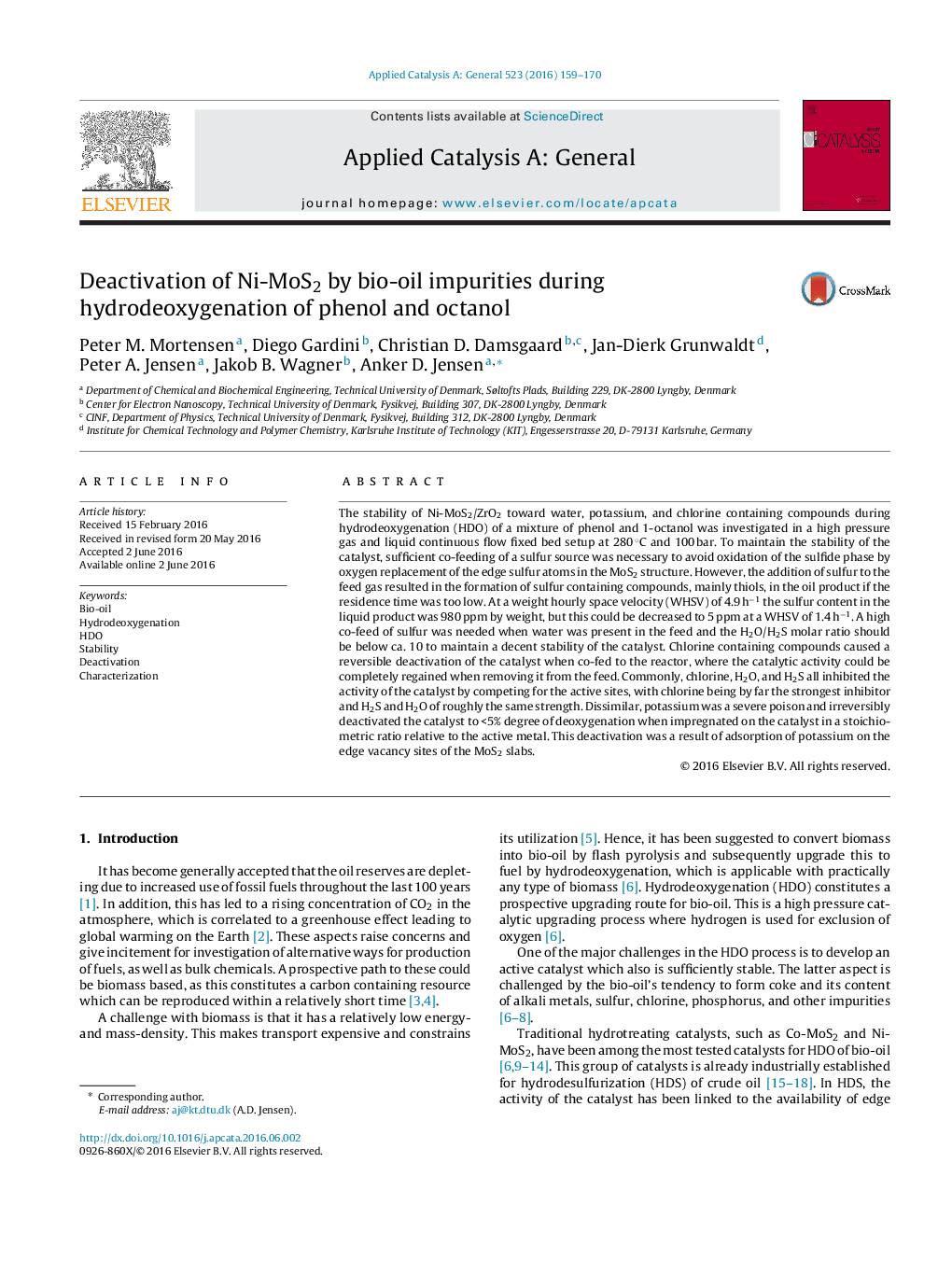| کد مقاله | کد نشریه | سال انتشار | مقاله انگلیسی | نسخه تمام متن |
|---|---|---|---|---|
| 38762 | 45790 | 2016 | 12 صفحه PDF | دانلود رایگان |

• Impurities as Cl, S, and K found in bio-oil will deactivate or inhibit MoS2-type catalyst by competing for the active sites.
• MoS2-based catalysts will produce sulfur containing hydrocarbons during HDO, but these can be removed again if a sufficiently high residence time is used enabling desulfurization of the product.
• Chlorine binds more strongly to the active sites of MoS2 based catalysts compared to H2O and H2S, while K irreversibly deactivates the catalyst.
The stability of Ni-MoS2/ZrO2 toward water, potassium, and chlorine containing compounds during hydrodeoxygenation (HDO) of a mixture of phenol and 1-octanol was investigated in a high pressure gas and liquid continuous flow fixed bed setup at 280 °C and 100 bar. To maintain the stability of the catalyst, sufficient co-feeding of a sulfur source was necessary to avoid oxidation of the sulfide phase by oxygen replacement of the edge sulfur atoms in the MoS2 structure. However, the addition of sulfur to the feed gas resulted in the formation of sulfur containing compounds, mainly thiols, in the oil product if the residence time was too low. At a weight hourly space velocity (WHSV) of 4.9 h−1 the sulfur content in the liquid product was 980 ppm by weight, but this could be decreased to 5 ppm at a WHSV of 1.4 h−1. A high co-feed of sulfur was needed when water was present in the feed and the H2O/H2S molar ratio should be below ca. 10 to maintain a decent stability of the catalyst. Chlorine containing compounds caused a reversible deactivation of the catalyst when co-fed to the reactor, where the catalytic activity could be completely regained when removing it from the feed. Commonly, chlorine, H2O, and H2S all inhibited the activity of the catalyst by competing for the active sites, with chlorine being by far the strongest inhibitor and H2S and H2O of roughly the same strength. Dissimilar, potassium was a severe poison and irreversibly deactivated the catalyst to <5% degree of deoxygenation when impregnated on the catalyst in a stoichiometric ratio relative to the active metal. This deactivation was a result of adsorption of potassium on the edge vacancy sites of the MoS2 slabs.
Figure optionsDownload high-quality image (130 K)Download as PowerPoint slide
Journal: Applied Catalysis A: General - Volume 523, 5 August 2016, Pages 159–170